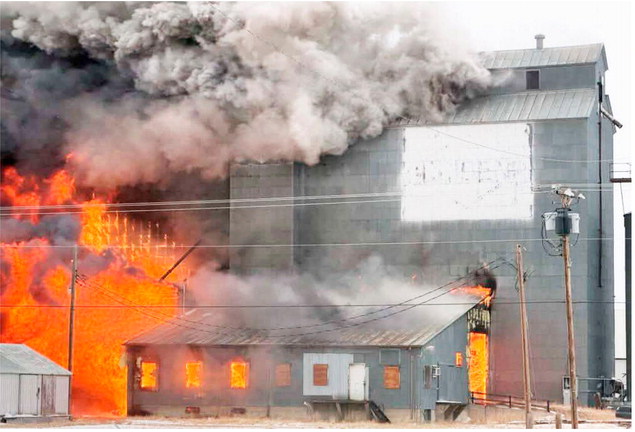Unions Vote Down Contracts, Renew Threat Of Rail Shutdown
For about 24 hours in September, railroads reluctantly put themselves in the national spotlight.
After years of fruitless negotiations with labor unions on a new contract, the industry was rapidly approaching a midnight deadline to avoid a national strike or lockout, which would have crippled an American economy already hobbled by record-breaking inflation, the lingering effects of the pandemic and a labor shortage. For a brief moment, the railroad industry — which often tries its best to stay out of the public eye — was above the fold in the New York Times, the Washington Post and other news sites, alongside the war in Ukraine and R. Kelly.
Then, with the help of President Joe Biden and other federal officials, the two sides announced an 11th-hour deal. Railroad executives, labor leaders and political leaders hailed the tentative agreement as a win for all sides that provided significant raises to tens of thousands of railroad workers across the country. With a deal in hand and the imminent threat of a national rail shutdown over, the country moved on. But now, six weeks later, railroaders are saying “Not so fast.”
In the last three weeks, members of two different railroad unions have rejected the contract their leaders negotiated, reviving the possibility of a nationwide railroad shutdown as early as this month. A shutdown, sparked either by a labor strike or a lockout by management, would cost the economy upwards of $2 billion a day and bring trains to a halt in Montana and around the country.
While labor leaders say the contract their members are voting on is one of the most generous ever offered — with the largest wage increase in 45 years and a $5,000 bonus — there remains palpable frustration among workers over how the railroads are being run and how they are being treated.
“Workers are fed up right now,” said Greg Regan, president of the Transportation Trades Department of the AFL-CIO. “They believe they are being used and abused by the railroads.”
Over the last decade, many of the continent’s biggest railroads have adopted a practice called “precision scheduled railroading,” a method of operation and management that often tries to move more freight with fewer employees and locomotives. As a result, the number of railroad workers has dropped dramatically in recent years (from more than 200,000 in 2015 to 146,000 in 2022, according to the U.S. Bureau of Labor Statistics), and those who remain are being asked to do more. Some railroads, including BNSF Railway, have adopted attendance policies to ensure they have the people they need to move trains. But labor leaders have said the policies are abusive to workers.
The railroads have also struggled to provide service to customers in recent months, and it got so bad that earlier this year hearings were held in Washington D.C. The railroads have blamed their struggles on the pandemic and said they are hiring more people to help catch up. A BNSF spokesperson told Montana Free Press the company has a goal to hire 3,000 new people in 2022.
Those issues and others have come to a head this year as six of the continent’s seven largest railroads (including BNSF and Union Pacific, which both operate in Montana) try to hash out a new labor contract with employees. Railroad-labor relations are governed by a nearly-century-old law called the Railway Labor Act of 1926. Under that law, railroads and unions have conducted negotiations on a multi-union and multi-employer basis to avoid strikes or lockouts. The last national railroad work stoppage was in 1992.
In June, after more than two years of talks and help from federal mediators, the National Mediation Board announced that talks between the Coordinated Bargaining Coalition (representing the unions) and the National Carriers Conference Committee (representing the railroads) had failed. That set in motion the appointment of a Presidential Emergency Board to review the conflict and make recommendations. In August, that board made its own suggestions and the railroads and unions began another round of talks. In early September, a number of smaller unions struck deals with the railroads. But a deal with the three largest unions — the Brotherhood of Railroad Signalmen, the Brotherhood of Locomotive Engineers and Trainmen, and SMART Transportation Division — remained elusive. Then, with just hours to go before a strike or lockout could have legally occurred, a deal was made.
Since then, members of the various unions have been voting on their individual contracts, but in October, two different unions — the Brotherhood of Railroad Signalmen and the Brotherhood of Maintenance of Way Employees — rejected their contracts. The president of the signalmen union (which represents employees who maintain rail traffic signals and crossing gates) said it was the first time its members have voted to not ratify a national contract. The votes set off a “status quo” period when the union’s leaders would go back to the railroads in search of a new deal. If they cannot score a new deal by the middle of November, the unions could go on strike. Should either of those two unions go on strike, it is likely that members of other unions would not cross a picket line, resulting in a nationwide shutdown.
While, the industry’s two largest unions representing locomotive engineers and conductors were slated to begin voting this week. Their ballots are due before Thanksgiving.
It’s unclear if the unions that have voted down their contracts will be able to get a better deal. Already, the railroads have signaled that they do not plan to offer more than they already have.
If a strike or lockout does occur, it’s likely that Congress would force the unions to accept a contract in order to avoid or end a shutdown. Already though, various industry groups are sounding alarms of concern about how even a brief shutdown would impact their businesses. On Oct. 27, 322 local, state and national trade associations sent a joint letter urging the White House to again get involved in the search for a solution to the impasse.
But Regan, the union president, said that outcome wouldn’t solve the industry’s many challenges, including low morale due to cutbacks and attendance policies.
“In all likelihood, these contracts will be implemented, either through ratification or by Congress,” he said. “But these broader issues will still need to be addressed.”

